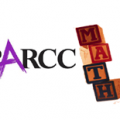
With the 2015 PARCC administration just around the corner, let’s turn the conversation to the tools that will help educators better prepare their students for the PARCC PBA (Performance-Based Assessment) and EOY (End-of-Year) tests. Specifically, this article will address PARCC’s diagnostic component for grades 2-8.
In addition to getting students test-ready, these diagnostic assessments are designed to “provide instructionally useful information about how well students have learned, or how prepared they are to learn key content and skills tied to the CCSS in ELA/Literacy and Mathematics to educators.” (www.parcconline.org).
These assessments will be useful for teachers and administrators in the following ways:
• Schools can become more responsive…sooner.
Because these tests can be administered early in the year, the teacher doesn’t have to wait months to receive baseline data regarding his or her students’ strengths and weaknesses. Of course, the earlier the teacher has this information, the more effectively that teacher can plan instruction that truly meets the students’ academic needs.
• Accessing important general and specific information will be easier.
This assessment will generate usable information for the teacher on two levels – as a whole class and for individual students. For example, if the results reflect that the entire group exhibits a gap in their learning, the teacher can adjust his or her instruction accordingly for the whole group. If, on the other hand, only certain individuals are struggling in a particular area, then the teacher can provide differentiation or seek extra resources to target those students’ areas of need. Either way, this data will help the educator decide what to focus on in a very specific, efficient way.
• Leveling.
Another way in which the diagnostic tool will assist teachers is that they will be able to use the tool to identify their students’ independent reading levels. Of course, this information will be useful in matching students with appropriate independent reading books – and will save valuable time in helping students as they make their reading selections.
Best of all, some of the “high-level vision” goals of this assessment will put the teacher’s mind at ease, as the tests are meant to be: “available on demand, with little…preparation; able to be administered and scored within a short period; have results available as soon as possible; provide …detailed yet easy to understand information…[and] provide feedback that supports targeted intervention and suggests instructional strategies” (https://www.parcconline.org). With these goals in mind, then, the diagnostic tool is meant to serve as an efficient, accessible tool that will actually save time and pinpoint focus areas quickly and clearly.
Next steps…
Although the actual tests aren’t available right now, the projected timeline (as of July 13, 2013) is to field test these tools in 2015 so that they are ready for the 2015-2016 school year. At this point, it would be safe to say that based on the information PARCC has released, teachers and administrators will be able to use the information by being able to:
• Quickly and easily identify students who need intervention.
• Have a clear idea of interventions the school needs to supply (or create) to fill in any gaps.
• Help curriculum supervisors create curricula that effectively meet the needs of the school/district, while maintaining alignment with the CCSS.
• Help teachers adjust and plan instruction that effectively targets the needs of his/her students.
• Drive relevant and practical professional development opportunities for teachers and administrators so that they receive the support and resources they need to help their students achieve.
Finally, if teachers and school districts effectively utilize the information generated from the diagnostic assessments, they will help their students meet with success on the PBA and EOY assessments that those students will be held accountable for later on in the school year.






Pingback: What to Expect … When You’re Testing | Think Educative